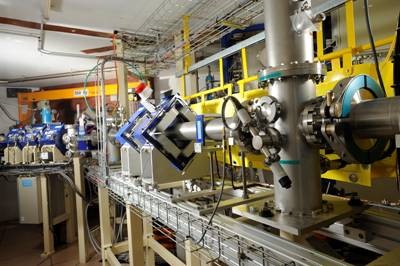- Homepage
- >
- Scientists
- >
- GANIL-SPIRAL 2 facilities
- >
- Experimental areas
- >
- LIRAT
- Accelerators
- Available beams
- Experimental areas
- ARIBE
- D1
- D2
- D3-D6 / LISE
- D5
- DESIR
- G1 / VAMOS
- G2
- G3
- G4
- IRRSUD
- LIRAT
- NFS – Neutrons for Science
- S3 – Super Separator Spectrometer
- Instrumentation
- ACTAR TPC
- AGATA
- CHATEAU DE CRISTAL
- DIAMANT
- EXOGAM / EXOGAM2
- FAZIA
- INDRA
- LPCTrap
- MORA
- MUST2
- NEDA
- PARIS
- REGLIS3
- S3 Low Energy Branch
- SIRIUS
LIRAT
The implementation of a low-energy beam facility at SPIRAL was proposed in 1998 by G. Auger, B. Blank and C. Lebrun [1] with the aim to perform nuclear structure, fundamental interaction and solid state physics studies with radioactive ion beams delivered by the SPIRAL target ion source systems.
Since 2005, the LIRAT (“Ligne d’Ions Radioactifs A Très basse énergie”) line delivers the SPIRAL low-energy beams to the LPCtrap setup where fundamental interaction studies are performed. Alternatively, they can be sent to the SPIRAL identification station [2], or to the CIME cyclotron.
By 2024, the LIRAT line will transmit SPIRAL beams to the DESIR facility.
The LIRAT line consists in magnetic optical equipment allowing to transport at less than 30 keV up to 80 mm.mrad beams with a efficiency better than 80%. The magnetic rigidity is limited to 0.136 T.m, which allows transporting A < 89 ions in a single charge state as well as multi-charged ions. The beam spot size is about 5 mm large at the focal point.

Figure: Photograph of the LIRAT beam line.
Representative radioactive ion beams available at LIRAT are listed below, where only the charge states associated with the largest intensities are considered. Information on the available SPIRAL beams can be found on the following web page.
| Ion | q | I (pps) |
| 6He | 1+ | 2.1 08 |
| 19Ne | 2+ | 1.5 108 |
| 32Ar | 9+ | 103 |
| 35Ar | 8+ | 3.5 108 |
Contact:
Jean-Charles Thomas, GANIL – thomasjc@ganil.fr
References
[1] G. Auger, B. Blank and C. Lebrun, GANIL Scientific Committee, 1998.
[2] G.F. Grinyer et al., Nucl. Inst. Meth. Phys. Res. A 741 (2014) 18.
